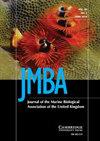从数十年公民科学计划中获得的见解:康沃尔和锡利群岛的灰海豹(Halichoerus grypus)搁浅(2000-2020)
IF 0.9
4区 生物学
Q3 MARINE & FRESHWATER BIOLOGY
Journal of the Marine Biological Association of the United Kingdom
Pub Date : 2023-08-25
DOI:10.1017/S0025315423000589
引用次数: 0
摘要
摘要海洋顶级捕食者丰度和分布的变化可能表明环境变化或需要管理响应的人为压力。在这里,我们使用了一个广泛的数据集(21年),对康沃尔郡和锡利群岛的灰海豹搁浅进行了时空分析,这些地方靠近该物种繁殖范围的南部边缘。从2000年到2020年,共报告了2007起搁浅事件,在此期间每年从35起增加到201起,增幅为474%。搁浅事件的持续增加在所有生命阶段和时间框架(5年、10年和20年)都是一致的,这为该地区丰度增加的说法提供了基础。观察到的季节性因生命阶段而异,与海岸附近动物在繁殖、换羽和幼崽等关键生命阶段的增加相吻合。搁浅现象广泛分布在康沃尔海岸和锡利群岛;然而,大多数搁浅事件都发生在康沃尔郡的北海岸(70%),那里发现了主要的幼崽和拖运地点。尽管有几个幼崽和拖运地点,但在锡利群岛(5%)记录到的一小部分搁浅事件被认为特别少。通过描述空间和时间上搁浅数量和生命阶段组成的基线,可以检测和调查未来频率、人口组成或空间分布的偏差。我们证明了长期公民科学数据的效用,可以提供关于高度流动的海洋哺乳动物的分布和丰度的有价值和成本效益的信息。本文章由计算机程序翻译,如有差异,请以英文原文为准。
Insights obtained from a multidecadal citizen science scheme: grey seal (Halichoerus grypus) strandings in Cornwall and Isles of Scilly (2000–2020)
Abstract Changes in abundance and distribution of marine top predators can indicate environmental change or anthropogenic pressure requiring management response. Here, we used an extensive dataset (21 years) to conduct a spatial and temporal analysis of grey seal strandings in Cornwall and the Isles of Scilly, close to the southern edge of the breeding range of the species. A total of 2007 strandings were reported from 2000 to 2020, increasing by 474% from 35 to 201 individuals per year during this period. The continued rise in strandings was consistent across all life stages and timeframes (5, 10 and 20 years), underpinning the suggestion of increasing abundance in the region. The observed seasonality differed by life stage, coinciding with the increased presence of animals near the coast for key life phases such as breeding, moulting and pupping. Strandings are widely distributed across the coast of Cornwall and the Isles of Scilly; however, most strandings were recorded on the north coast of Cornwall (70%) where major pupping and haul out sites are found. Despite hosting several pupping and haul out sites, a small proportion was recorded on the Isles of Scilly (5%) where it is thought that strandings are particularly underreported. Describing baselines in magnitude of strandings and life-stage compositions across space and time allows future deviations in frequency, demographic composition or spatial distribution to be detected and investigated. We demonstrate the utility of long-term citizen science data to provide valuable and cost-effective information on the distribution and abundance of a highly mobile marine mammal.
求助全文
通过发布文献求助,成功后即可免费获取论文全文。
去求助
来源期刊
CiteScore
2.30
自引率
8.30%
发文量
68
审稿时长
3-8 weeks
期刊介绍:
JMBA is an international journal, publishing original research on all aspects of marine biology. It includes pioneering work taking place today on major issues concerning marine organisms and their environment. Subjects covered include: ecological surveys and population studies of marine communities; physiology and experimental biology; taxonomy, morphology and life history of marine animals and plants; and chemical and physical oceanographic work. Included with 2010 online subscriptions: Marine Biodiversity Records.

 求助内容:
求助内容: 应助结果提醒方式:
应助结果提醒方式:


